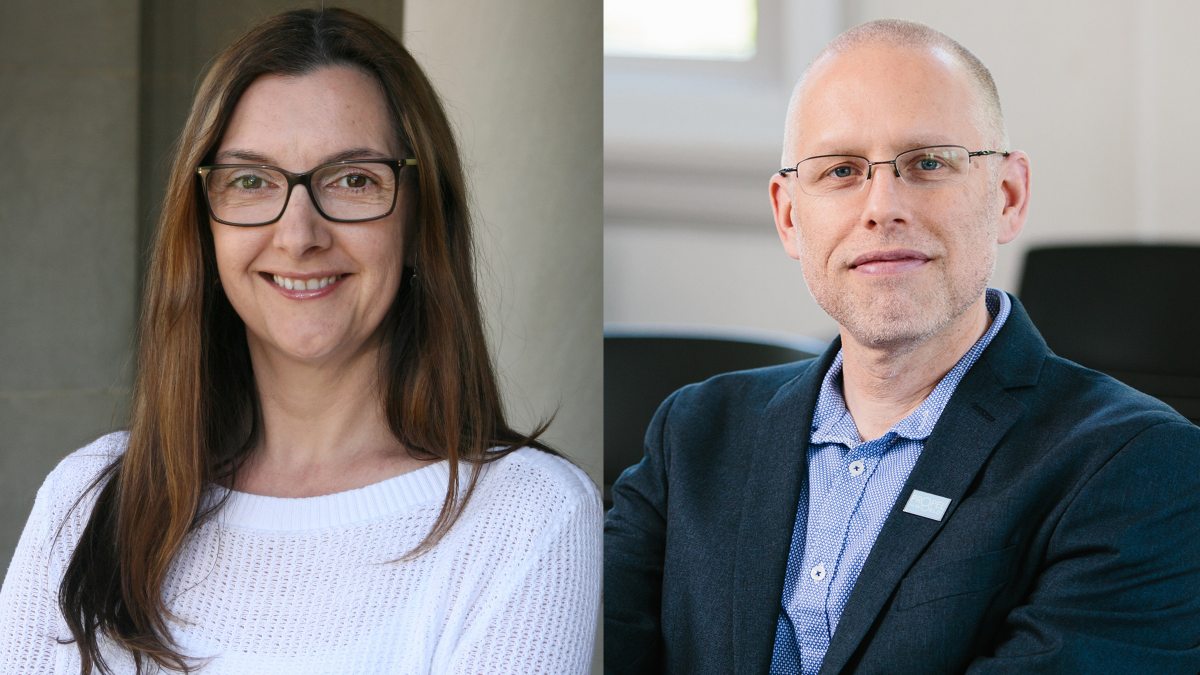Managing uncertainty: Tips for helping parents in uncertain times
UNC School of Education researchers share ways to manage uncertainty.

With the increasing probability that K-12 online learning will continue for many families through this fall, many parents are likely feeling uncertain about whether and how they can handle it again after tough experiences in the spring.
Although the scale of the uncertainty in the wake of the COVID-19 pandemic might be new, research on how people manage uncertainty has been around for decades.
It can be helpful to understand what psychology researchers have learned about uncertainty, typical responses to uncertainty, and good ways to approach dealing with uncertain situations.
Understanding uncertainty
What is uncertainty? Is it a person’s response to a situation, a characteristic of a situation, or both? It’s both.
Researcher Jerome Kagan defined uncertainty as an alerted “affective,” or psychological, state stemming from an inability to predict the future, or the incompatibility between two ideas, an idea and experience, or an idea and behavior.
Kagan included the need to resolve uncertainty as being among the four primary motives driving human behavior, also including sensory pleasure, resolution of anger and hostility, and achievement of mastery.
On the other hand, although many researchers agree that situations can be described in terms of their degree of uncertainty, they rarely define situational uncertainty.
In our own work, we have described situational uncertainty as a characteristic of complex situations that are not fully definable, interpretable, or predictable, and have many possible outcomes and related consequences.
In certain situations, personal ways of dealing with uncertainty are not typically relevant. The more uncertain the situation, the more influential a person’s typical way of resolving uncertainty becomes.
How people deal with uncertainty
Three constructs from social psychology are particularly helpful for understanding the various ways people deal with uncertainty:
- Intolerance of ambiguity.
- Need for cognitive closure, and
- Uncertainty orientations.
Intolerance of ambiguity refers to a person’s propensity for interpreting ambiguous situations as threatening. A person who is intolerant of ambiguity reacts to such situations with avoidance or rejection, accompanied by feelings of discomfort, dislike, uneasiness, anxiety, and sometimes anger. Ambiguity intolerant people reduce ambiguous situations to ones that are simpler and more familiar by focusing only certain, familiar cues in the situation; they rigidly adhere to what they already know, sometimes leading to poor decision-making.
In contrast, people who are tolerant of ambiguity have even-tempered emotional reactions to it. They can perceive ambiguous situations more realistically and handle them with flexibility, without distorting or omitting valuable cues. Tolerance of ambiguity can help parents adapt as educational roadmaps evolve in response to changes in the pandemic.
The need for cognitive closure is a desire to reach a definitive answer on an open issue to avoid uncertainty, confusion, and ambiguity. Researchers have found that individuals with a strong need for closure are motivated to eliminate uncertainty and simply find an answer, any answer. They tend to form quick and simplistic judgments based on limited evidence.
In contrast, people who have a low need for closure can suspend judgment as they engage in systematic evaluation of available options resulting in more complex and flexible decision-making. For example, people with a low need for cognitive closure might investigate novel hybrid instructional models and be more open to taking advantage of their benefits.
Finally, people’s uncertainty orientation can affect how they process information when they approach situations of varying degrees of uncertainty. Uncertainty-oriented individuals have a positive orientation toward uncertain situations and are motivated to resolve uncertainty by focusing on what they can discover and learn about themselves and their environment.
In uncertain situations, such as when considering different options for homeschooling, uncertainty-oriented individuals are motivated to think thoroughly and process information systematically, developing effective strategies.
Certainty-oriented individuals, on the other hand, orient toward what is certain and familiar and strive to maintain current clarity by avoiding or ignoring uncertainty. In uncertain situations, certainty-oriented individuals use often unhelpful strategies — shortcuts for judgment and decision-making.
How to better handle uncertainty
For people who would like to improve how they deal with uncertainty, it is helpful to understand different ways we tend to respond to it.
For parents who are feeling unease or anxiety about the current uncertainties regarding the changing educational landscape, or who see their children wanting to withdraw from uncertainty altogether, these findings from social psychology offer some valuable lessons:
- Understand and accept: Whether you feel anxious and want to flee or are okay with the “up in the air” status of the school year, know that many other people feel the same way. Our human nature pushes us to resolve the uncertainty, by either actively addressing it or by turning away from it.
- Normalize: Parents can model behaviors for their children that normalize feelings of anxiety in response to uncertainty. For example, parents can say: “Video conferencing flustered me at first, but I figured it out — you can, too.”
- Turn unfamiliar into familiar: Another helpful tip for reducing anxiety regarding unknowns is to learn more about them. Children may benefit from practicing with the technology they will use for online learning. Parents can practice video calls with their children and play out scenarios such as how to share the screen or ask a question in a chat window.
- Preserve and evolve: There are situations in which each of the ways of dealing with the uncertainty has its advantages. Our desire to orient towards what is certain and known will serve us well as we pivot to online learning and seek to remember and preserve the best educational practices from the traditional classroom environment. On the other hand, our desire to explore the unknown will help us “level up” and evolve those educational practices to fit the new circumstances. A certainty-orientation would make it more likely that parents preserve a student’s educational routine, which can be beneficial. Uncertainty-orientated parents may be more willing to let go of traditional ideas of schooling and instead embrace the perspective that learning from home means a balance of formal learning time and time with family and other home distractions.
- Balance: Importantly, the best response to an uncertain situation might be balancing out our typical response with one that is less common for us. For example, a parent who would like to know and research all possible options about the upcoming academic year might need to strike a balance between the need to keep searching for the perfect solution with the need to make a decision now, which, even if it is less than ideal, provides some closure and a way to move forward.
People have different ways of dealing with uncertainty. Understanding how and why we approach or turn away from uncertain situations is critical to productively managing our responses to them.
Although at the moment there is high uncertainty about remote learning and its implementation, it helps to remember some lasting ideas from psychology, so we can more thoughtfully handle the uncertainty of the global pandemic and its implications.




